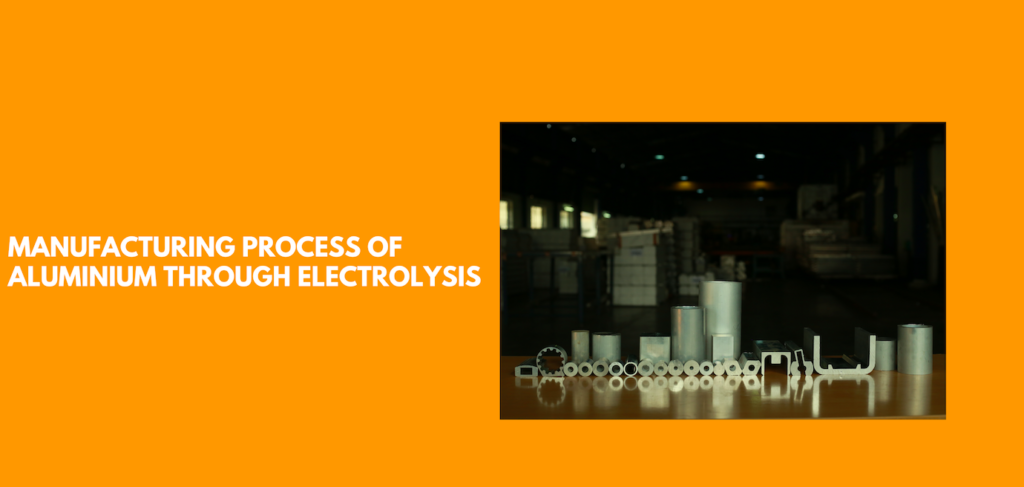Manufacturing Process of Aluminium Through Electrolysis

Aluminium is one of the most abundantly available elements in earth’s crust and infinitely recyclable. You may wonder why it continues to be expensive. This is largely because of the huge quantum of electricity used in the extraction process.
Aluminium ore is called bauxite. Bauxite can be considered an impure aluminium oxide. The major impurities in bauxite are iron oxides, silicon dioxide and titanium dioxide. So, bauxite is first purified to yield pure aluminium oxide (also known as alumina) through something called a Bayer process from which aluminium can be extracted.
The process of electrolysis
The extraction of aluminium from aluminium oxide is done by electrolysis. The process of electrolysis involves using electricity to break down electrolytes to form base elements. Aluminium is one of the metals which is extracted from its ore by this method. The first step is to melt the aluminium oxide so that electricity can pass through it. Aluminium oxide has a very high melting point (above 2,000°C) to electrolyse on its own. It would be expensive to melt it as well.
The solution for this problem is to get it dissolved in molten cryolite, which is an aluminium compound with a lower melting point than aluminium oxide. Cryolite is rare and expensive as well but is now mostly made chemically. The use of molten cryolite as a solvent helps in reduction of some of the energy costs involved in aluminium extraction by allowing the ions in aluminium oxide to move freely at a lower temperature.
The mixture of cryolite and aluminium oxide has a lower melting point than pure aluminium oxide. This is how the energy requirement is reduced and extraction is made cost effective. Conducive conditions for electrolysis are established with use of cryolite.
The steel case, used in electrolysis, is coated with graphite. Graphite is a form of carbon and acts at the negative cathode for the electrolysis. The positive anodes are also made of graphite but are immersed in the molten cryolite and aluminium oxide solution. When electricity flows, Aluminium ions, from the aluminium oxide, are formed at the negative cathode and then sink to the bottom because they are heavier than the cryolite solution. Then, the aluminium that has sunk to the bottom is collected in liquid form, from where it is tapped out. At the same time, the oxygen, from the aluminium oxide, forms at the positive anode and reacts with the carbon of the graphite to form carbon dioxide or CO2. When oxygen reacts with the carbon of the anode, forming carbon dioxide, they gradually burn away. Due to this, the anodes have to be replaced frequently, thereby adding to the cost of the process.
When aluminium is recycled it needs only about 5% of the energy used to extract it from bauxite, hence, from the cost as well as environmental perspectives it’s always encouraged than fresh extraction. To give it more strength aluminium is usually alloyed with other elements such as silicon, copper or magnesium. The features that make aluminium a very commonly used metal is its low density, the strong electric conduction properties, corrosion resistance and strength in the form of an alloy.
KMC aluminium is one of the top aluminium extrusion profiles manufactures and can be considered the best aluminium company in Chennai. It is the best aluminium company in Chennai which has a very sophisticated aluminium extrusion process and are aluminium profile suppliers to some of the most prestigious projects across the country. It has also built the reputation of being in the top list of aluminium extrusion companies in India and as well as of the top aluminium extrusion manufacturers in India.


Recent Comments